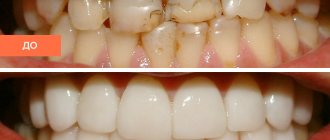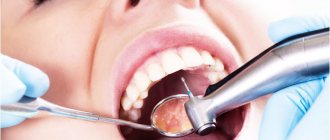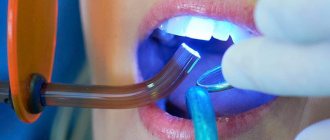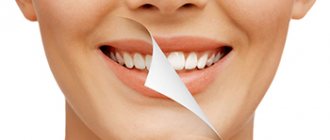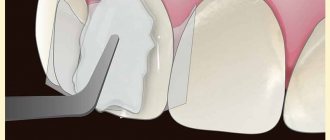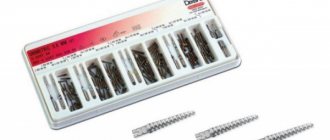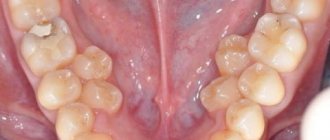There are several types of malocclusion. Rare teeth are the most common. It is characterized by the presence of very wide spaces between dental units. At the same time, the chewing structures are externally similar to a comb with sparse teeth. This pathological condition cannot be ignored, as it can lead to the development of dangerous complications. Currently, there are several methods for treating rare teeth (a photo of the defect is presented below). The feasibility of using a particular method is assessed by the orthodontist.
Causes and consequences
The “culprit” of the pathology is a genetic factor. Large distances between chewing units are noticeable already at the stage of eruption of milk teeth. In extremely rare cases, pathology develops against the background of progression of dental diseases.
Rare teeth in humans are not only unsightly, but also dangerous to health. Initially, psycho-emotional instability appears. It is caused by complexes that have arisen and low self-esteem.
In addition, sparse teeth cause the following pathological conditions:
- Disorders of the gastrointestinal tract. Wide spaces between dental units do not allow for proper chewing of food. As a result, food enters the stomach in an insufficiently processed form. The natural consequence is indigestion.
- Tooth loss. Chewing units located far from each other are characterized by increased fragility. In addition, they are extremely vulnerable to any external influences.
- Inflammatory processes in the oral cavity. When there are large gaps between teeth, soft tissues also become more vulnerable to external influences. They are easily injured, and when pathogenic microorganisms penetrate the oral cavity, an inflammatory process develops.
To prevent the development of complications and make your smile perfect, you need to contact an orthodontist. Only a doctor can provide information on how to correct rare teeth in each specific case.
Types of bite
The bite can be correct or incorrect. If it is correct, then it does not affect the condition of the teeth and health in general. The jaws close correctly, articulation is painless, and the temporomandibular joint moves smoothly. A person can chew food normally, which has a positive effect on digestion, the state of the gastrointestinal tract and well-being.
There are 4 types of physiological occlusion:
- straight,
- orthognathic,
- physiological prognathia,
- opisthognathia.
Types of malocclusion:
- Distal. It is characterized by a large sagittal fissure - up to 9 millimeters. The teeth of the upper jaw protrude forward. More often, the appearance of the anomaly is influenced by genetic predisposition. But it can also be triggered by bad habits or untimely removal of baby teeth.
- Open. The jaws cannot be closed tightly because the side and front teeth do not touch. The pathology is often acquired.
- Deep. The upper jaw overlaps the lower jaw, so the teeth do not touch.
- Mesial. The lower jaw protrudes forward.
- Cross. The jaws do not close tightly, and the teeth grow incorrectly and are of different sizes.
- Edentia. With such a pathological bite, some of the teeth in the row are missing.
- Tremas and diastemas. The peculiarity is that the teeth are too sparsely spaced, causing large gaps to appear between them.
- Crowding. Teeth grow incorrectly and can “crawl” onto each other.
Each type of malocclusion requires specific treatment. An orthodontist will help you choose the right option after diagnosis.
Diagnostics
After the examination, the orthodontist will refer the patient for a comprehensive examination. Based on its results, the doctor will be able to make a decision on what to do with the rare teeth of the person who contacts him.
Diagnosis may include the following studies:
- Orthopantomogram. This is a three-dimensional shot of the jaws.
- X-ray examination.
- Computer diagnostics. The method is considered the most accurate and informative. It allows you to evaluate both the structure of the jaw and the location of the teeth.
Based on the diagnostic results, the orthodontist will select the most effective method of treating rare teeth. It is important to understand that it is impossible to correct the genetic factor, but doctors are able to disguise the defect so that the patient’s smile is perfect. Contrary to popular belief, if adults have sparse teeth, braces are powerless. This method of correcting the bite is not used if a person has large distances between the teeth.
Is it possible to correct an overbite without braces?
Correcting a bite with braces is the most effective method of coping with pathology, even in adults. But if the patient has only minor dental deformations, the use of such a design may not be necessary. Then removable systems, such as aligners and trainers, are better suited. Veneers will help improve the aesthetics of your smile.
Veneers and crowns
Veneers are thin ceramic overlays. They are fixed to the front surface of the teeth after preliminary grinding. Suitable for correcting small defects in the frontal area. They are more preferable than crowns, since they do not cover the entire tooth, but only its front surface.
Advantages:
- high aesthetics;
- efficiency;
- the ability to eliminate tremata, diastemas, slight reversal of incisors;
- the overlays are durable and do not stain;
- there is no need for bleaching - the color of the veneers can be matched to your own tooth tissue or the dentures can be made lighter.
But such prosthetics also have some disadvantages:
- you need to grind down your own tooth tissue (sometimes even remove the pulp);
- Ceramic onlays cannot correct serious bite defects.
Aligners
An aligner is a transparent silicone tray that is made individually for each patient. Treatment requires 2-3 such aligners with varying degrees of elasticity. You need to wear mouthguards night and day (22–24 hours a day). Removal is allowed during meals and for cleaning.
Aligners are suitable if you need to correct mild or moderate dental deformation.
Advantages:
- easy care - just regularly clean the aligner with a brush;
- there is no need to diet or avoid coloring foods;
- can be used for whitening.
Flaws:
- are not firmly fixed on the teeth;
- not suitable for the correction of severe malocclusions;
- the need for prolonged wearing.
Trainers
The trainer is a removable structure in the form of a splinting mouthguard. It is made of plastic. Designed for overnight wear and recommended for use several hours a day.
Advantages:
- can be used at the retention stage after orthodontic treatment;
- low price;
- Suitable for correcting malocclusion of baby teeth.
Flaws:
- trainers are not used to correct serious malocclusions;
- discomfort when wearing.
Orthodontic devices
Orthodontic devices are a plate with clasps (hooks), screws, rings and arches. All these parts ensure that the teeth move in the desired direction. The design can be either removable or non-removable.
Orthodontic appliances can correct mild to moderate malocclusions. But when worn, they cause discomfort and affect diction.
Correction of malocclusion begins with a consultation with an orthodontist and diagnostics, including an orthopantomogram, CT scan of the upper and lower jaw, taking impressions, etc. Based on the results, the doctor will determine the optimal correction options and announce the cost and timing of treatment.
Dental implantation
The technique is the most radical. The essence of the procedure is to replace rare dental units with prostheses. The latter are screwed into the jaw using a titanium pin that imitates a tooth root.
The main advantage of implants is that they are as similar as possible to natural chewing units and fully perform the functions of the latter. As a result, food is chewed efficiently and the load between the teeth is distributed evenly. As a result, the process of forming a correct bite begins.
In addition, implanted teeth are permanent. In other words, they do not need to be removed and cared for separately.
Dental implantation is contraindicated if the patient has type II diabetes mellitus, HIV, hepatitis and severe heart pathologies.
Types of anomalies
- macrodentia: the anomaly is that the teeth are too large, often causes crowding of the row, affects the anterior region of the jaw,
- microdentia: excessively small teeth inevitably affect the aesthetic side of the issue. Most often, the defect affects the entire jaw, which is why wide gaps are formed in the rows,
- pointed crowns: wide at the gums and narrow at the apex, have a pointed tip resembling a spike,
- other anomalies of shape: in dental practice, there are a variety of variations of irregular teeth shape. Often it is simply impossible to clearly distinguish between them.
Installation of a bridge
The use of fixed orthodontic structures is a modern way to fill wide gaps in the dentition.
In order for the prosthesis to be securely fixed, it is necessary to have supporting dental units. It is on them that the entire structure is attached.
The best option is to make a bridge from metal ceramics. The service life of this design is 7 years or more. At the same time, the bridge retains its original shade and does not differ from adjacent natural teeth.
Contraindications to installing a prosthesis on rare teeth:
- Acute periodontitis.
- Parafunctions of the masticatory muscles.
- Insufficient height of supporting teeth.
If there are absolute contraindications, the doctor makes a decision regarding the advisability of using a different treatment method.
Why is it important to correct malocclusion?
Correction of dental malocclusion can be carried out for both adults and children - there are no age restrictions. The problem cannot be left unattended.
Why do you need to correct dental anomalies:
- aesthetics improves;
- diction improves;
- facial muscles relax;
- the functioning of the temporomandibular joint improves;
- headaches associated with malocclusion disappear;
- the risk of developing diseases of the gums and teeth is reduced, as the pressure on the teeth is reduced, and the problem of enamel abrasion is solved.
Correcting the bite also helps to cope with psychological problems that were caused by pathology - isolation, secrecy, reluctance to communicate with other people.
Sealing
Currently, it is one of the most affordable ways to treat rare teeth. Its wide distribution is due to its low cost and ease of implementation.
The essence of the method is as follows: fillings of the same color as the natural chewing units are applied to the teeth. The procedure is considered a jewelry procedure, since the doctor must literally mold new bone structures. As a result, the teeth become wider and the gaps between them disappear. Only a specialist can visually distinguish fillings from natural dental units.
During the procedure, orthodontists use only high-quality materials. These are ceramics and porcelain.
After filling rare teeth, the functioning of the gastrointestinal tract is normalized and a correct bite begins to form.
Installation of veneers
This is a highly effective correction method. Veneers are thin plates made of ceramic or porcelain. They are placed on top of natural teeth.
The main advantage of the method is that the plates cover and protect the enamel coating of the dental units. In other words, there is no need to grind or file down adjacent teeth.
Contraindications for installing veneers:
- Severe destruction of dental units from the tongue.
- The presence of large fillings.
- Grinding of teeth.
- Having a bad habit of opening bottles with your teeth, cracking nuts with them, etc.
In addition, veneers cannot be installed if six or more chewing units are missing from the mouth.
Installation of crowns
These are non-removable structures that can be used to eliminate dental defects. The installation of crowns is also indicated in case of severe destruction of dental units. The essence of the method is to insert an artificial tooth into the gum using a pin made of metal.
Installing crowns requires some preparation. The patient's natural teeth are prepared and, if necessary, pulp removal is performed. Crowns take several days to make. During this period, the patient is provided with temporary structures. The finished crowns are completely identical to the patient’s teeth. They differ only in width, which makes it possible to hide large gaps between chewing units.
The following conditions are contraindications: loose teeth, allergic reaction to the components used, periodontal pathologies. In addition, crowns are not placed on anyone under 16 years of age.
Rare teeth in a child
Radical treatment methods are not used for children. In addition, a child under 5 years old just needs to be monitored. This is due to the fact that after teething, the jaw continues to grow, so there must be gaps between the dental units. This is a normal physiological process. It is necessary to consult a doctor only if the space between the teeth remains very wide after the eruption of all milk teeth.
Children may have braces. In most cases, after such an adjustment, the teeth will take the required position, and the distance between them will decrease.
If the cosmetic defect remains pronounced even after removing the braces, the doctor may recommend filling or installation of veneers. The advantage of these methods is that there is no need to prepare natural teeth. It is recommended to give preference to the installation of veneers. Thin plates can not only hide empty areas, but also protect the enamel from the harmful effects of external factors.



